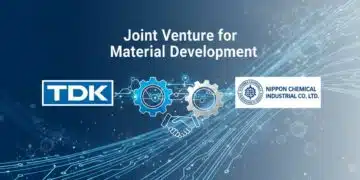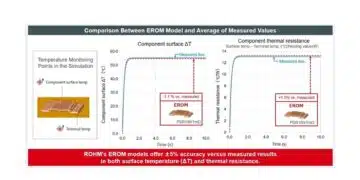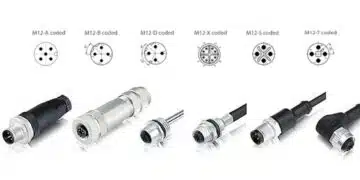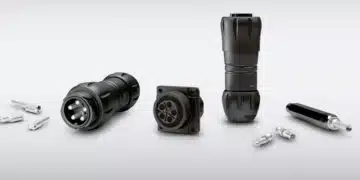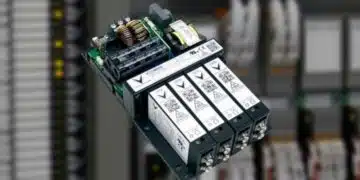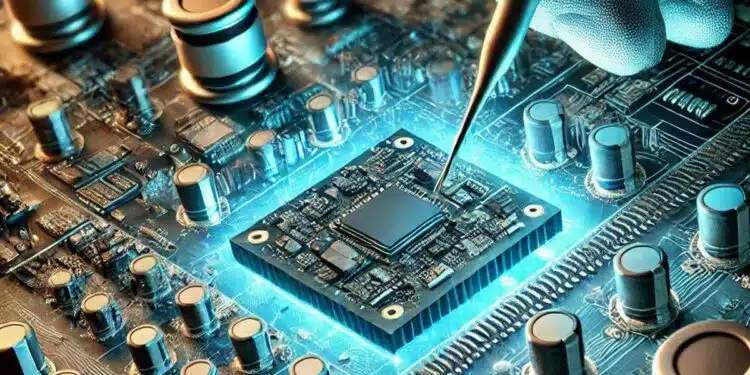Smoltek published blog article comparing its CNF Carbon nano-fiber MIM wafer-based capacitor additive technology with Deep Trench Capacitors (DTS) subtractive technology to make capacitors.
Think about the smartphone in your pocket. It’s a marvel of engineering, packed with incredible computing power, all thanks to a myriad of tiny components. Among these unsung heroes are capacitors, which store and release electrical energy to keep everything running smoothly.
But the industry is never satisfied, always wanting more capacitance in less space. This has led to a race to find new capacitor technologies. For a while, the deep trench capacitor (DTC) technology looked promising.
But now they are approaching the limits of what physics will allow, and the industry is still not satisfied. Fortunately, a new contender has emerged: carbon nanofiber metal-insulator-metal (CNF-MIM) capacitors.
CNF-MIM capacitors don’t have the inherent limitations of DTC, but instead point the way forward to even more capacitance in even less volume.
Subtractive vs. additive: two ways of creating
To understand why DTC technology faces inherent limitations while CNF-MIM represents the future, let’s picture two distinct ways of creating. DTC is like carving a sculpture from a block of marble – it’s a subtractive process. You start with the material and remove what you don’t need. In contrast, CNF-MIM is like sculpting with clay – an additive process. Here, you build up a structure layer by layer, adding material precisely where needed.
The DTC journey starts with a silicon wafer. From that surface, precise processes create deep trenches, like miniature wells in the ground. These trenches are then carefully filled with different materials to form a capacitor. While this approach has pushed the boundaries of what’s possible, it’s running into physical barriers. It’s like a sculptor trying to carve an impossibly intricate design from an ever-smaller block of marble.
The physical limits of DTC
The crux of the problem with DTC lies in the physics of its creation.
To increase capacitance density, that crucial measure of how much electrical charge can be stored in a given space, manufacturers aim to create deeper, narrower, and more numerous trenches. Capacitance is directly proportional to the surface area, so deeper trenches create more wall area, increasing capacitance. More trenches increase the overall area. Additionally, capacitance is inversely proportional to the distance between the walls. Therefore, narrower trenches bring the walls closer, increasing capacitance.
However, there’s a practical limit to how deep and narrow these trenches can be. Uniform coating of materials becomes harder and the risk of short circuits or unacceptable leakage current increases.
As these trenches reach their physical limits, the ability to improve DTC performance rapidly decreases. Returns diminish with each attempt to make the trenches more aggressive. Imagine trying to paint the inside of a straw with a brush, and at the same time making that straw thinner and longer. It quickly becomes impossible. Also, the structure becomes more fragile with deeper and more numerous trenches.
CNF-MIM: Building the future, layer by layer
Now let’s look at the Smoltek CNF-MIM process. It is a radical departure from the subtractive methods used in techniques such as DTC.
Instead of digging trenches, CNF-MIM is manufactured by putting incredibly thin carbon nanofibers vertically on the substrate. Think of it as a forest of microscopic trees. These fibers, which are 10,000 to 15,000 times thinner than a human hair, are meticulously coated, each with a thin layer of metal, followed by a thin layer of insulating material, and then another layer of metal. This creates a metal-insulator-metal capacitor at the nanoscale. These layers can also be repeated for multilayer capacitor structures.
By making the nanofibers long, a large surface area is obtained within a small footprint. By creating a dense forest of fibers, this area is multiplied many times over. In this way, very high capacitance can be achieved without increasing the volume.
A transformative advantage
The advantage is transformative. Where DTCs struggle with depth and width ratios in their trenches, CNF-MIM effortlessly achieves much higher aspect ratios because its structures are added rather than subtracted. It’s like the difference between digging a ditch and building a skyscraper. This foundational difference means CNF-MIM capacitors can potentially achieve a vastly greater capacitance density than is physically possible with DTC technology.
The future of capacitors is here
As we look to the future of electronics, the limitations of DTC technology become increasingly apparent. The industry needs a solution that can scale beyond current physical constraints. CNF-MIM technology provides just that. Its additive manufacturing approach unlocks possibilities that are simply unattainable with subtractive methods.
The potential of CNF-MIM technology was highlighted in an interview with Dr. Philip Lessner. His assessment acknowledged the groundbreaking capabilities of Smoltek’s CNF-MIM capacitors. This expert validation underscores the industry’s growing interest in additive manufacturing and the revolutionary potential of CNF-MIM technology.
As the electronics industry continues its relentless pursuit of miniaturization and enhanced performance, the demand for higher-performing capacitors will only intensify. CNF-MIM technology not only meets these current challenges but also provides a clear pathway for future advancements. It’s not just a temporary solution but a long-term answer to one of the most pressing challenges facing the electronics industry.




